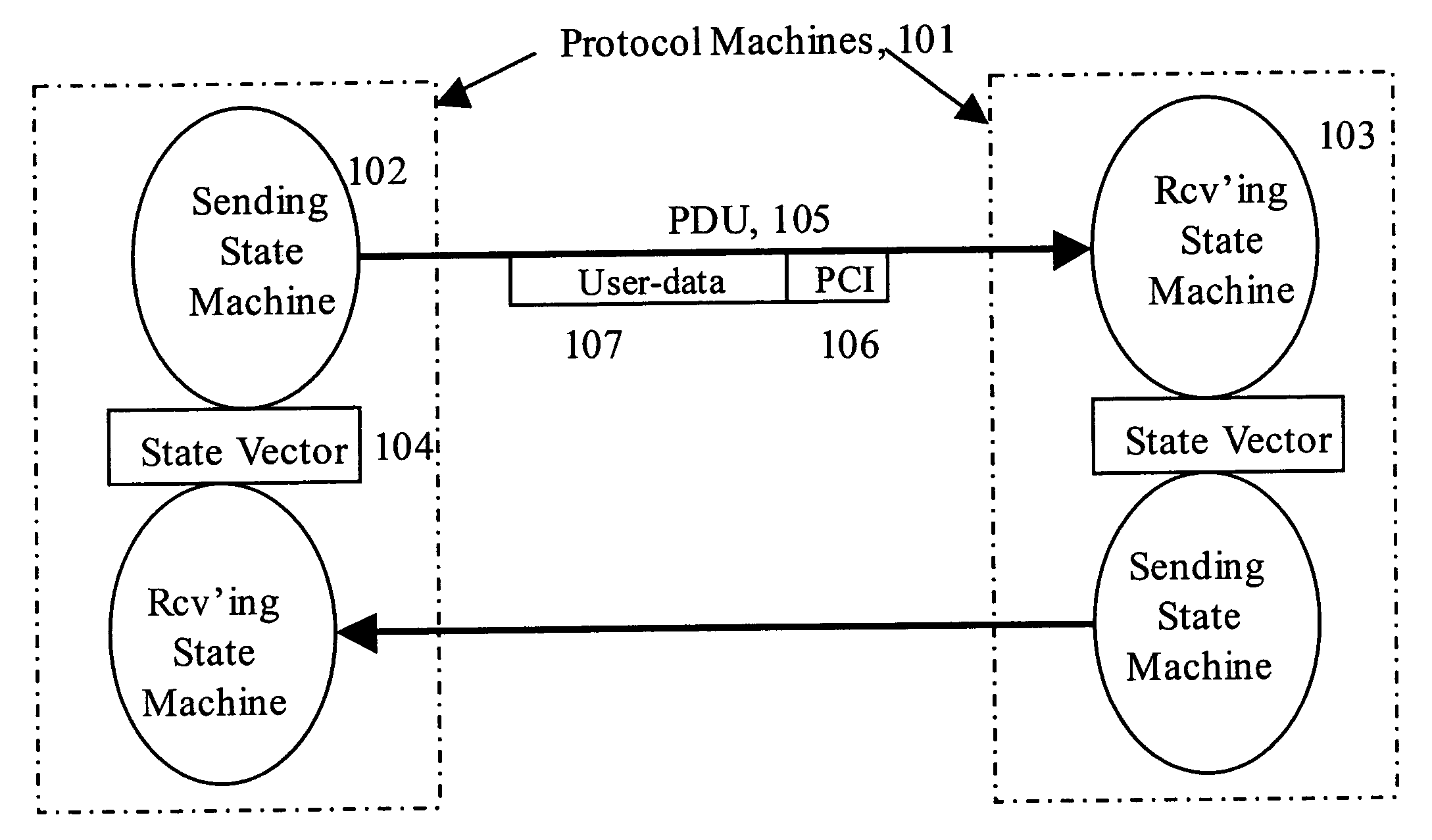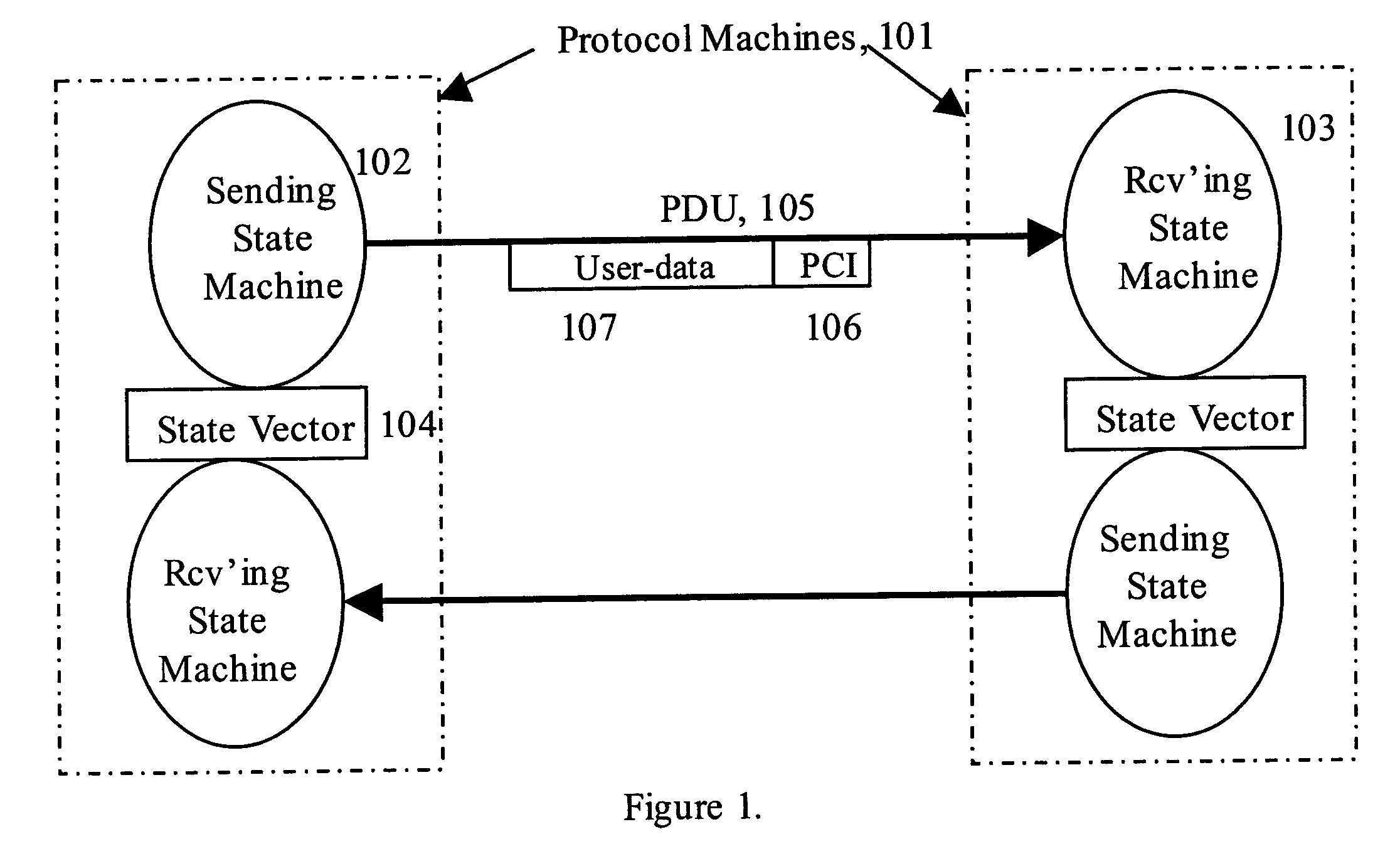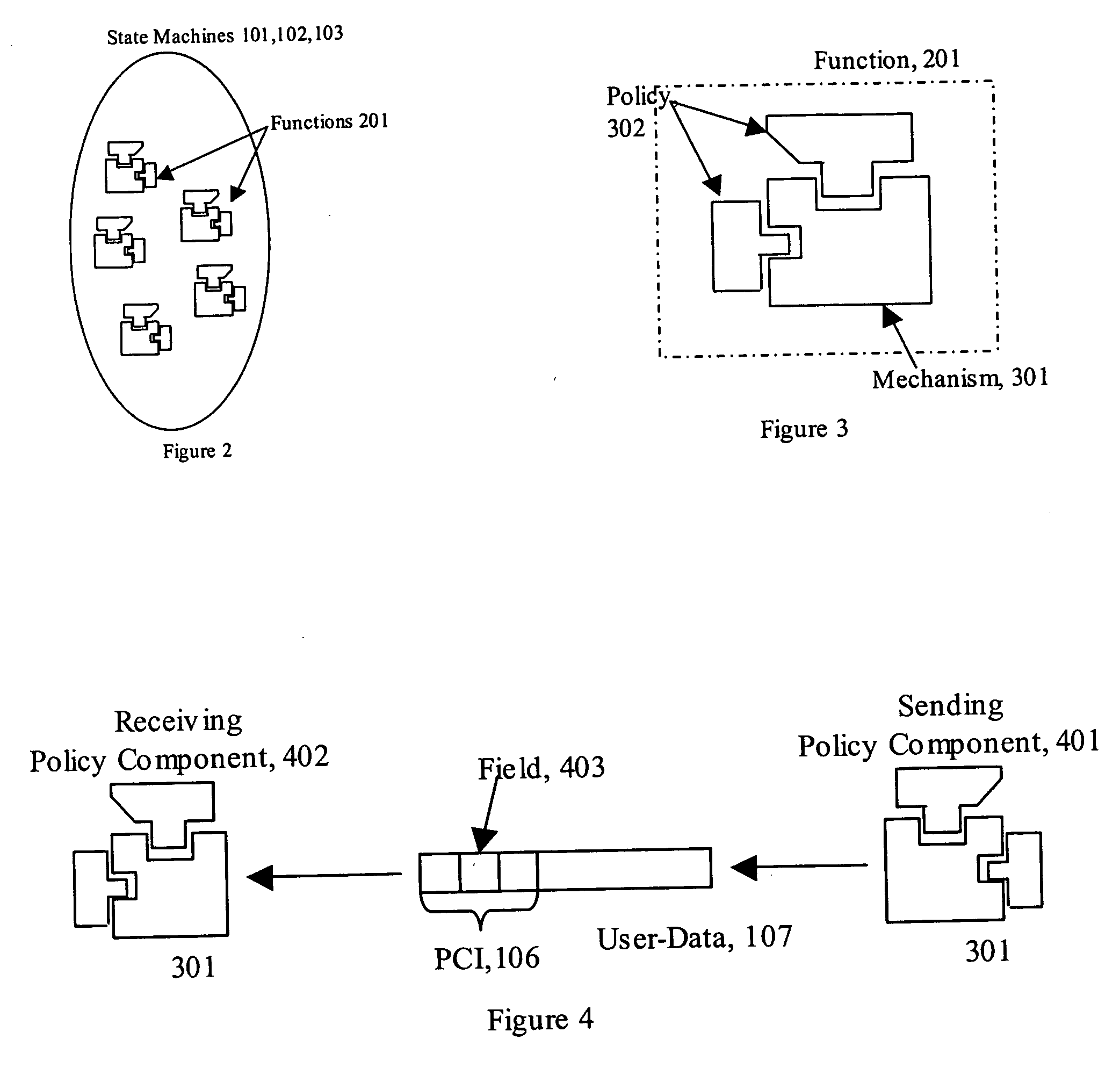Network architecture
a network architecture and network technology, applied in the field of digital networks, can solve the problems of increasing complexity, problems such as the problem of flat address spaces and the naming of ports in networks, and achieve the effect of simplifying and improving the efficiency of information transport across networks
- Summary
- Abstract
- Description
- Claims
- Application Information
AI Technical Summary
Benefits of technology
Problems solved by technology
Method used
Image
Examples
first embodiment
[0118] The embodiment shown in FIG. 7 allocates the mechanisms between the error control and relaying protocols in a form that closely parallels the placement of functions found in protocols like TCP and IP, or TP4 and CLNP, or XNS. The common PCI, 703, provides the PCI elements common to all PDUs. Relaying and multiplexing, 702, is performed followed by the error and flow control, 701, on a per flow basis.
second embodiment
[0119] The embodiment shown in FIG. 8, however, allocates tightly-bound mechanisms to the relaying and multiplexing protocol, 802, and loosely bound mechanisms to the error and flow control protocol, 801. This also implies that the relaying and multiplexing protocol only requires a 2-way handshake any state synchronization while the error and flow control protocol requires a 3-way handshake. The common PCI, 803, provides the PCI elements common to all PDUs. In this embodiment, the relaying and multiplexing protocol is the primary vehicle for data transfer with the error and flow control protocol being out-of-band. An Application protocol is a specialization of the relaying and multiplexing protocol with additional functions in the data transfer phase. The error and flow control protocol would only be present for application protocols only if one or two phase commits was required.
[0120] These embodiments apply only to the implementation and are fully and completely equivalent in the...
PUM
 Login to View More
Login to View More Abstract
Description
Claims
Application Information
 Login to View More
Login to View More - R&D
- Intellectual Property
- Life Sciences
- Materials
- Tech Scout
- Unparalleled Data Quality
- Higher Quality Content
- 60% Fewer Hallucinations
Browse by: Latest US Patents, China's latest patents, Technical Efficacy Thesaurus, Application Domain, Technology Topic, Popular Technical Reports.
© 2025 PatSnap. All rights reserved.Legal|Privacy policy|Modern Slavery Act Transparency Statement|Sitemap|About US| Contact US: help@patsnap.com



